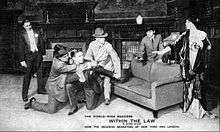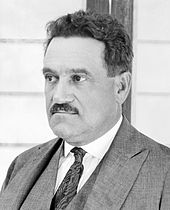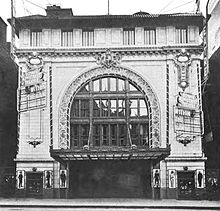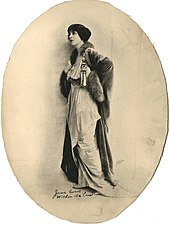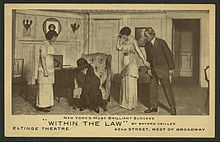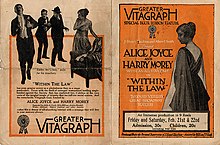
Alice Brady was an American actress who began her career in the silent film era and survived the transition into talkies. She worked until six months before her death from cancer in 1939. Her films include My Man Godfrey (1936), in which she plays the flighty mother of Carole Lombard's character, and In Old Chicago (1937) for which she won the Academy Award for Best Supporting Actress.

Lillian Russell was an American actress and singer. She became one of the most famous actresses and singers of the late 19th and early 20th centuries, known for her beauty and style, as well as for her voice and stage presence.
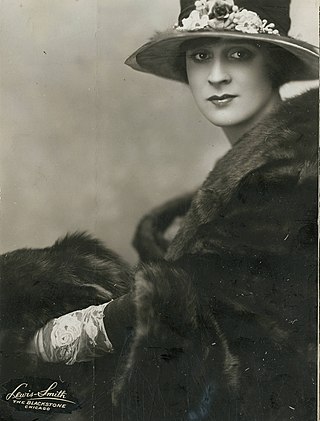
Jane Cowl was an American film and stage actress and playwright "notorious for playing lachrymose parts". Actress Jane Russell was named in Cowl's honor.

The American Airlines Theatre, originally the Selwyn Theatre, is a Broadway theater at 227 West 42nd Street in the Theater District of Midtown Manhattan in New York City. Built in 1918, it was designed by George Keister and developed by brothers Edgar and Archibald Selwyn, for whom the theater was originally named. The theater is owned by the city and state governments of New York and leased to New 42nd Street. It has 740 seats across two levels and is operated by Roundabout Theatre Company. Since 2000, the theater has been named for American Airlines (AA), which bought the theater's naming rights.

Grace C. F. Roth Henderson was an American stage actress and prolific performer in silent motion pictures.
The Trial of Mary Dugan is a play written by Bayard Veiller.

Emily Stevens was a stage and screen actress in Broadway plays in the first three decades of the 20th century and later in silent films.

Paid is a 1930 American pre-Code drama film starring Joan Crawford, Robert Armstrong, and Kent Douglass in a story about a wrongly accused ex-convict who seeks revenge on those who sent her to prison using a scam called the "Heart Balm Racket".
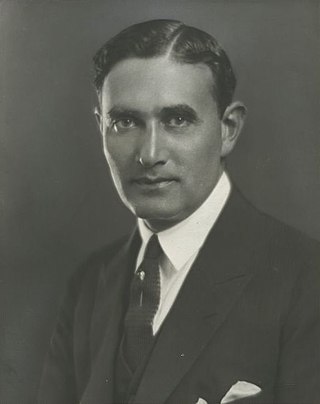
Edgar Selwyn was a prominent figure in American theatre and film in the first half of the 20th century. An actor, playwright, director and producer on Broadway, he founded a theatrical production company with his brother, Archibald Selwyn, and owned a number of Selwyn Theatres in the United States. He transferred his talents from the stage to motion pictures, and directed a film for which Helen Hayes received the Academy Award for Best Actress. Selwyn co-founded Goldwyn Pictures in 1916.

Bayard Veiller was an American playwright, screenwriter, producer and film director. He wrote for 32 films between 1915 and 1941.

Frances Grant Starr was an American stage, film and television actress.

Within the Law is a 1923 American silent drama film directed by Frank Lloyd and starring Norma Talmadge. In 2009, the film was released on DVD along with Talmadge's 1926 film Kiki. Jane Cowl had starred in the original 1912 Broadway production of Bayard Veiller's play of the same name about a young woman who is sent to prison and comes out seeking revenge.
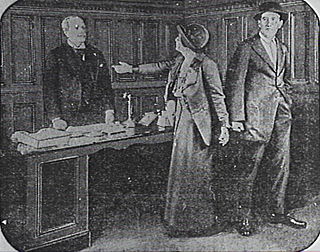
Within the Law is a 1916 Australian silent film based a play of the same name by Bayard Veiller. The leading role was played by American stage star Muriel Starr, reprising her stage performance. It is considered a lost film.
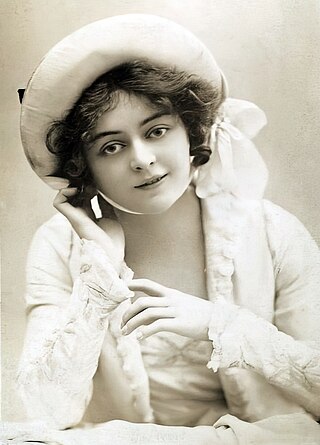
Adrienne Adele Augarde was an English actress and singer popular for nearly a decade on both sides of the Atlantic Ocean, primarily for her roles in Edwardian musical comedy.
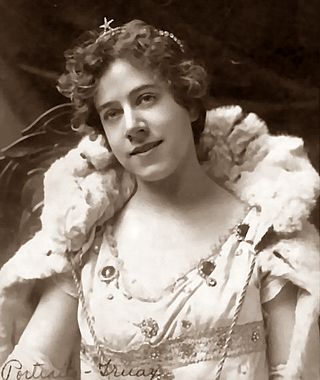
Sarah Truax was an American actor whose career began in the mid-1890s and lasted well into the twentieth century. Though she appeared in only a handful of Broadway and Hollywood productions over her career, Truax did achieve success throughout America as a star of stock and touring companies. She had starring roles in The Two Orphans, The Prince of India and The Garden of Allah. During her later years Truax remained active as an actor and stage director working with community theatres across her adopted state of Washington.
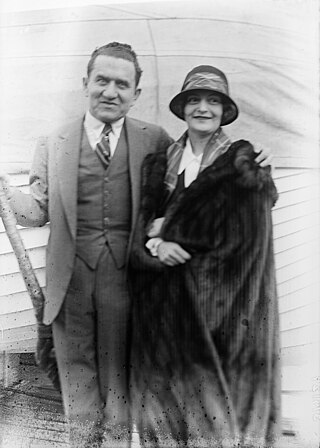
Archibald Selwyn was a Canadian-American play broker, theater owner and stage producer who had many Broadway successes. He and his brother Edgar Selwyn were partners. They were among the founders of Goldwyn Pictures, later to be merged into MGM.

Within the Law is a 1939 American (Precursor) Film noir crime film directed by Gustav Machatý and written by Charles Lederer and Edith Fitzgerald. The film stars Ruth Hussey, Tom Neal, Paul Kelly, William Gargan, Paul Cavanagh, and Rita Johnson. The film was released on March 17, 1939, by Metro-Goldwyn-Mayer.
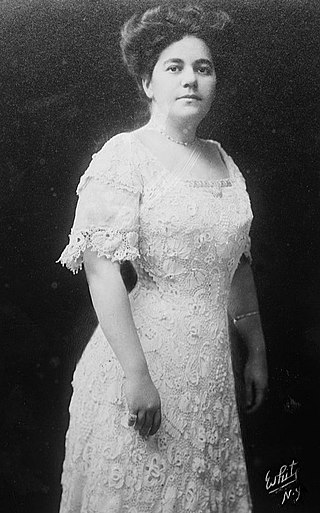
Irene Wallach Harris, better known as Renee Harris, was the first female theatrical manager and producer in the United States. Harris was interested in the theater, but had no experience with it other than as a patron. While attending a matinée, she met her husband, the noted theatrical manager and producer Henry B. Harris. The two had a whirlwind courtship, with Harris assisting her husband in his work even before the marriage. Through their work together, Harris learned about both theater management and theatrical production. Her husband said that she was competent enough to take over his business if anything happened to him.

Orme Caldara was an American stage actor. He was married to actress Julia Dean from 1906 to 1913. Caldara appeared in one movie, The Spreading Dawn with Jane Cowl. He often appeared with Cowl in the theatre co-starring with her in several influential Broadway plays, including Within the Law (1912–1913), Common Clay (1915–1916), Lilac Time (1917), and Smilin' Through (1919–1920).
The Fabulous Invalid is a 1938 stage play by George S. Kaufman and Moss Hart following the oscillating fortunes of a fictitious Broadway theater, the Alexandria, in the period between 1900 and 1930. The play's title has since entered the vernacular as a synonym for the theater.
